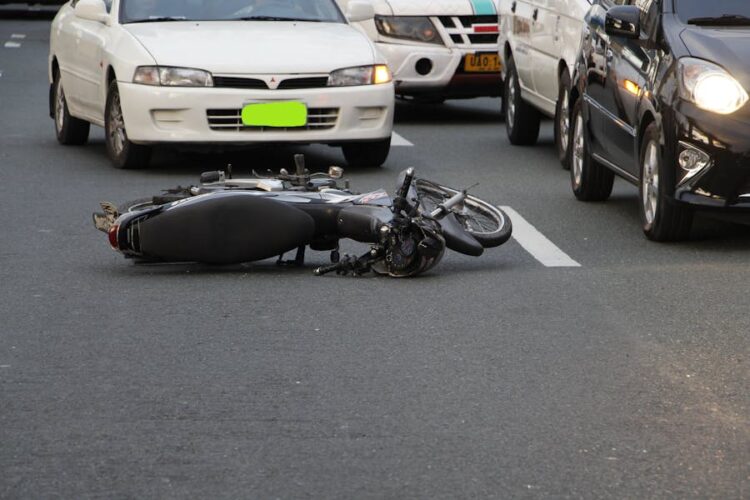Motorcycle accidents are a significant concern on Louisiana’s roads, with 2023 witnessing 97 fatalities and 1,229 injury crashes involving motorcyclists. Such incidents not only pose severe risks to motorcyclists but also lead to complex legal and medical situations. If you are involved in a motorcycle accident in places like Alexandria, taking certain steps immediately afterward is crucial to protect your rights and ensure you can pursue the compensation you may be entitled to.
First and foremost, seek medical attention even if you believe your injuries are minor. Medical records will serve as important documentation of your injuries and their potential impact on your life. Next, if you are able, collect evidence at the scene. This includes taking photos of your motorcycle, the other vehicles involved, any visible injuries, and overall road conditions. Also, gather contact information from any witnesses. After addressing immediate health and safety concerns, contact an Alexandria motorcycle accident lawyer. A lawyer specializing in motorcycle accidents can provide essential guidance, from navigating insurance claims to representing you in legal proceedings, ensuring your rights are vigorously defended.
Now, let’s take a look at this blog, which lays out detailed steps for those caught up in motorcycle accidents.
Assessing Immediate Security
In the event of an accident, it’s important to prioritize safety above all else. If possible, move swiftly to a place to prevent any harm and assess any injuries. Seek help promptly if necessary. Minor injuries should be examined by a professional. Getting assistance helps in healing and generates vital documentation for potential claims in the future.
Compiling Proof
Gathering evidence at the scene plays a role in determining the outcome of a case and significantly impacts the case’s outcome. Photographing the accident location and vehicles involved, as well as any visible injuries, is extremely important. Witnesses provide unbiased viewpoints, so obtaining their contact information is advantageous. Recording weather conditions, road obstacles, and vehicle placements further bolsters the overall case.
Sharing Information
It’s important to share information with others involved in the situation by exchanging names and contact information, insurance details, and vehicle registration numbers. This helps insurance companies communicate better with each other during the claims process and ensure that all information is correct to prevent issues later.
Getting a Medical Assessment
When injuries seem minor at first glance, it’s wise to get a full medical checkup. Certain injuries might not show symptoms immediately. A detailed medical assessment helps identify and address any problems. Keeping records from this checkup is crucial for supporting injury claims.
Alerting Insurance Companies
It’s crucial to notify the insurance companies about the accident promptly and describe what happened so they can start handling the claims efficiently. Maintaining communication with insurers is key to preventing any hitches or confusion during the claims procedure.
Keeping Track of Spending
It’s useful to keep a record of all the costs from the accident, such as bills and repair expenses, to make sure you get compensated properly for your out-of-pocket expenses and calculate the amount of compensation.
Engaging with Legal Experts
Seek advice from lawyers who specialize in dealing with motorcycle accidents, as it can be beneficial for your situation. Legal professionals offer insights to help you navigate the legal procedures involved in such cases, guiding you on your rights and the various avenues available for seeking compensation for damages incurred as a result of the accident.
Steering Clear of Taking Responsibility
It is advisable not to confess any wrongdoing at the accident site or in conversations with others, as such admissions could be used against those implicated in the incident. It is best to let the authorities and insurance agencies carry out their investigations. Statements made without advice should be thought over carefully to prevent any repercussions.
Keeping the Lines of Communication Open
It’s crucial to keep communication open with everyone involved in the process, as it helps prevent misunderstandings and promotes cooperation among all parties. It’s also important to provide updates on the status of claims and legal matters to keep everyone in the loop. This strategy ensures a more seamless resolution process for everyone.
Getting Ready for Legal Action
Sometimes, legal action may be required in situations where being ready for legal proceedings is a wise approach. It is helpful to collect all paperwork and keep a record of what happened, as this can assist in constructing a solid argument if needed. Expert consultation can offer advice on the probability of litigation and the necessary procedures to follow.
Centering on the Process of Recuperation
Recovering physically and emotionally is crucial following an accident. Seeking assistance from doctors and therapists, as well as joining support groups, can help in the healing process and help people swiftly get back to normal life. Emotional strength is key in navigating the challenges that come after an accident.
End Note
Prompt action and making decisions following a motorcycle accident are crucial to safeguarding one’s entitlements. It is essential to take safety measures and seek advice from experts, as every decision matters. Having a grasp of your rights, obligations, and the significance of record-keeping aids in effectively dealing with the aftermath. Giving priority to recuperation and fostering dialogue contribute to a seamless resolution process, enabling individuals to progress with certainty.









